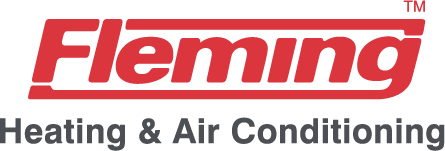Everyone’s always looking to save money on their utility bills, but you should know there’s a way to lower energy use, even when you’re not even home.
The key is your thermostat. By learning more about its special features and settings, you can tailor the temperature to your needs. That means you can have different temperature settings for when you’re at home, away or even when you’re asleep.
By trying a few of these schedules, you have more time to enjoy pleasant temperatures while also keeping more of your money. Check out our guide on how your thermostat can save you money in the summer:
While at Home
When you’re home, you want comfortable temperatures. For the most part, you probably have your thermostat lower in the summer if you’re indoors to appreciate the cool air.
But in terms of energy efficiency, the best range for when you’re in your home during the summer is in fact anywhere between 78 and 80 degrees Fahrenheit. This way, you’ll avoid the worst of summer while still keeping your energy bills low.
While Gone
When setting the temperature for a vacation or other trip away from the house, the majority of homeowners will set the thermostat higher than normal.
Depending on the local climate or your home’s location, you can set the temperature as high as 88 degrees while no one is home and then lower it back to the sweet spot of 78-80 degrees when you or a family member return. This way, your air conditioning won’t have to work constantly to provide cooling for a bunch of empty rooms.
While Sleeping
When it comes to sleeping in the summer, you want a nice cool temperature. You should try and keep things between 68-72 degrees Fahrenheit. This will keep you from getting too hot or too cold when you are trying to get some rest.
Other Strategies for Lowering Energy Use:
- Install a smart thermostat: Using a smart thermostat in the summer is an excellent way to reduce energy costs since it can plan your temperature adjustments according to your lifestyle and idea of what comfortable is. It’ll take care of making changes while you are home or sleeping, before allowing it to warm up when no one is home. With reliable brands like the Lennox iComfort, you have the ability to remotely access and change the temperature through your smartphone, tablet or laptop. Requesting smart thermostat installation in your South Beloit and Belvidere home is an effortless way to set the correct temperature even when you aren’t home.
- Replace current equipment with a newer HVAC system: A high-efficiency HVAC system can save money in the long run. By investing in a more energy-efficient system, your utility bills will be lower because it requires less energy to reach your preferred temperatures. Air conditioning installation in South Beloit and Belvidere is a great way to beat the heat in the summer.
- Schedule annual AC maintenance: Whether or not you keep up with regular air conditioning maintenance in South Beloit and Belvidere can have a serious effect on your total monthly energy use. With regular cleaning of the coils, checking for damage and clearing ventilation of dust and debris, this can help your HVAC system perform better during day-to-day use.. Increasing efficiency also limits strain on the unit and lowers operational costs, resulting in lower energy usage and subsequently, smaller bills.
- Replace your air filter regularly: A regular schedule for cleaning or replacing the HVAC system’s air filter saves money by improving airflow. When filters are clogged with dirt and debris, air conditioners have to work harder, and the strain can reduce the system’s life span and cause breakdowns.
- Verify your attic has enough insulation: Insulation is a crucial component for any energy-efficient home, securing the hot air outside and the cool air inside through summer. The North American Insulation Manufacturers Association (NAIMA) suggests that homeowners living in southern climates should possess at least 13-14 inches of insulation, while those in northern U.S. states should have 16-18 inches.
- Check your air ducts: Leaky ductwork can raise your energy bills much more than 20 percent, plus it can also lead to problems with your water heater, clothes dryer and other appliances throughout your home. Checking your ductwork for leaks and sealing them can fix both of those problems.
- Seal all other leaky spots in your home: Sealing leaky spots in your home with caulk, foam sealant or weather-stripping keeps temperatures a little cooler on hot summer days. Don’t forget to check for any gaps around windows, doors and even outdoor fixtures. Making time to seal leaks now can help you save a lot over time.


